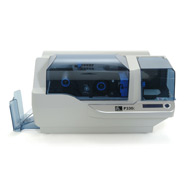How Chip-Based Serialization Benefits Item-Level RFID
 For many retailers, large and small, item-level RFID might be the best thing since sliced bread. Unlike bar codes, these tags don't require line of sight access to be read and can be scanned more than once without inflating counts. Where once inventory might have occurred just annually, radio frequency identification tags and handheld readers can do the job in just hours.
For many retailers, large and small, item-level RFID might be the best thing since sliced bread. Unlike bar codes, these tags don't require line of sight access to be read and can be scanned more than once without inflating counts. Where once inventory might have occurred just annually, radio frequency identification tags and handheld readers can do the job in just hours.
And the benefits of item-level RFID tagging are many, including significantly faster inventory counts, less disruption on the sales floor, greater inventory accuracy, and a decline in internal shrink, sometimes by as much as 50 percent or more.
But achieving these accurate counts requires that every RFID tag carry a unique serial number. And that's where the process can hit a snag.
When using traditional bar codes, identical items carry identical Universal Product Code (UPC) numbers, while RFID uses a standard called an Electronic Product Code or EPC. Both include a GS1-standard General Trade Item Number (GTIN), but the EPC also carries a unique serial number along with the GTIN.
During serialization then, the brand owner must ensure that the combination of the serial number and the GTIN creates a completely unique number.
For many retailers, the serialization process has long been handled on the IT side. Businesses allocate serial numbers using some type of software program and either a "dynamic" or "static" process.
But since both these processes depend on flawless record keeping and continuous connectivity across the globe, errors and system failures can easily disrupt the systems, often creating duplicate tags, and leading to inaccurate inventory counts.
That's why many retailers have turned to chip-based serialization. Most RFID chips contain a memory location called a Tag Identifier (TID) that's written just once by the chip manufacturer. The TID includes a unique serial number along with the make and model number of the chip.
So when the chip is ready to be attached to a retail item, the EPC is already loaded on the chip and no IT integration is necessary. It's a simple process for a printer or RFID encoding system to combine the GTIN and the TID, spitting out an RFID label with guaranteed uniqueness and virtually no opportunity for error.
With this uniqueness built into the RFID chips during the manufacturing process, there's less work to be done during implementation. Download the RFID Chip-Based Serialization for Retail white paper to learn more about this topic.
See related articles:
Item Level RFID: How Retailers Are Changing the Inventory Process
RFID Chips Get Smaller and More Versatile
